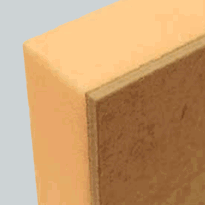Types and Materials of Foundation Insulation
Foundation insulation is vital for maintaining thermal efficiency and preventing moisture issues within a property. Selecting the appropriate type and material is essential for ensuring long-term performance and durability.
Fibreglass insulation, available as batts or loose-fill, offers versatility and cost-effectiveness, making it a popular choice for various foundation types. Its ease of installation and broad availability make it an accessible option for many homeowners and builders.
Mineral wool, including rock, stone, or slag wool, provides excellent fire resistance alongside favourable thermal properties. This material is suitable for resilient insulation needs, especially in areas requiring enhanced fire safety and durability.
Expanded polystyrene (EPS) is lightweight and straightforward to install, often utilised on exterior surfaces. Its ease of handling and cost efficiency make it suitable for a range of foundation applications.
Extruded polystyrene (XPS), on the other hand, offers higher durability and superior insulation performance, making it particularly advantageous for below-grade use. Its resistance to moisture absorption ensures it maintains its insulating properties over time.
Cementitious foam insulation, composed of mineral-based compounds such as magnesium oxide, presents a non-toxic, non-flammable alternative. It's ideal for long-term environmental safety, structural integrity, and applications where specific fire retardant properties are required.
Choosing the right foundation insulation depends on the specific requirements of the building, environmental conditions, and long-term performance expectations. Proper selection and installation are crucial in creating an energy-efficient and moisture-resistant foundation.
Benefits and Thermal Performance of Insulating Foundations
Implementing insulation around a building’s foundation provides tangible benefits in enhancing energy efficiency and improving indoor comfort. Insulated foundations markedly reduce heat loss, leading to decreased energy consumption and lower heating costs.
They also help keep floors warmer, which boosts occupant comfort throughout the year, and improve moisture control, reducing the risks of dampness and mould growth. Additionally, foundation insulation supports environmental sustainability by reducing greenhouse gas emissions associated with energy use.
Key benefits include:
- Minimising heat flux through foundation walls to maintain consistent indoor temperatures.
- Achieving seasonal energy savings that can amount to approximately 990 kWh over a three-month period.
- Protecting the structural integrity of the foundation by reducing thermal stress and better adapting to climate fluctuations.
Collectively, these factors improve the thermal performance and durability of buildings while promoting construction practices that are both economically and environmentally responsible.
Installation Techniques and Moisture Management Strategies
To ensure effective foundation insulation installation and moisture management, a systematic approach that emphasises meticulous preparation and attention to detail is essential. Proper site preparation involves levelling the ground, ensuring adequate drainage, and excavating around the foundation perimeter. Installing a footing drain pipe and smoothing foundation surfaces with parging help prevent water ingress. When applying insulation, rigid boards such as extruded polystyrene (XPS) or foil-faced polyisocyanurate are utilised, installed from the footing to the cladding, with tight overlaps and corrosion-resistant fasteners. Selecting appropriate insulation materials based on climate and foundation type is crucial for optimal performance. Moisture management includes verifying the functionality of drainage systems, applying waterproof membranes, and sealing all gaps to minimise water penetration. Proper protection comprises overlapping insulation at corners and backfilling with free-draining material to prevent moisture accumulation.
Conclusion
Proper foundation insulation enhances energy efficiency by reducing heat loss, improves moisture control, and helps safeguard structural integrity. Selecting suitable materials such as foam boards or injectable foam, and applying correct installation techniques, ensures consistent thermal performance. Incorporating moisture management strategies prevents water infiltration and potential damage. A comprehensive understanding of different insulation types, their benefits, and correct installation methods is essential for effective implementation. Ultimately, this results in a durable, energy-efficient foundation that maintains stable indoor temperatures and reduces long-term maintenance costs.









































































































































































































































































































































































































































